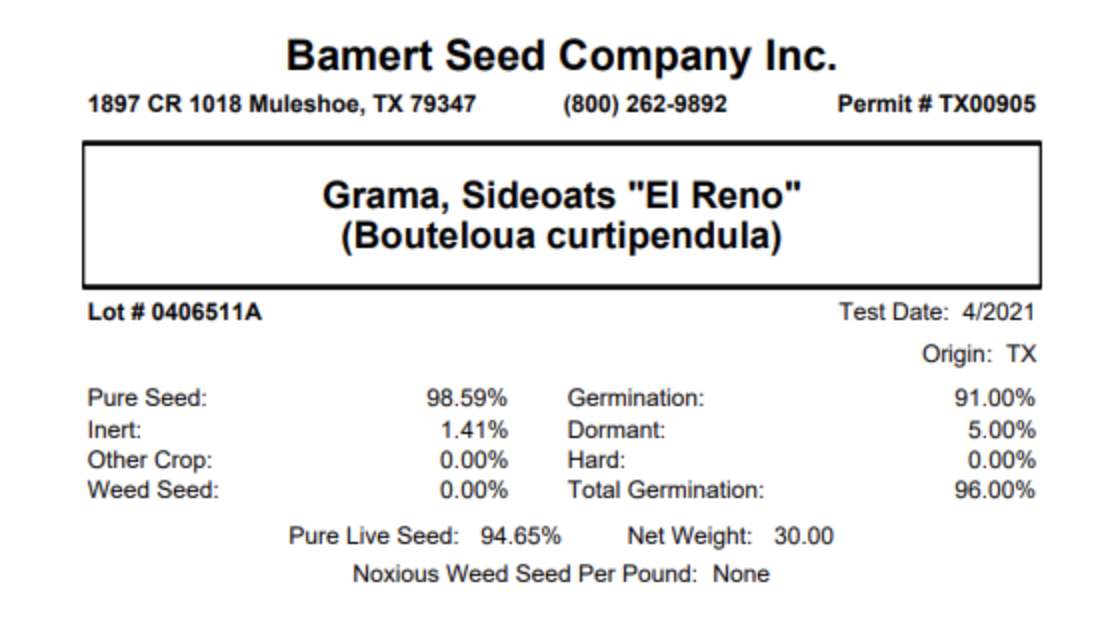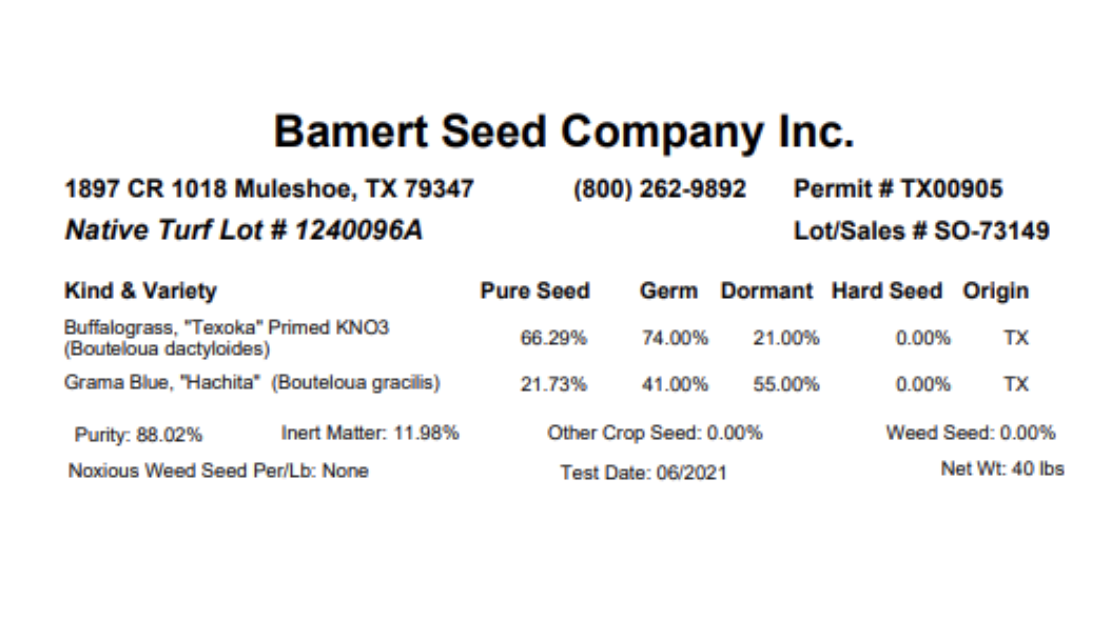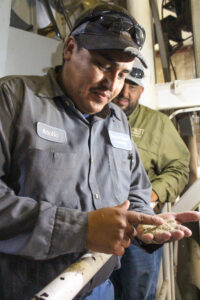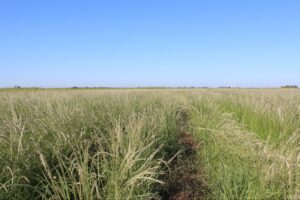Whether you purchase a one-pound bag of grass seed at a chain store or a 50-pound custom blend from Bamert, your seed bag will include a seed tag. These tags are required by law to protect the consumer and provide information about what they’re purchasing. But if the buyer doesn’t understand the seed tag, it really doesn’t matter. Let’s dive into the useful insight seed tags provide.
Here is the seed bag tag for our “El Reno” Sideoats Grama.
You will always find certain things on every seed bag tag:
- The name of the seed company, phone number and address
- The name of the seed and its variety or variety not stated (VNS) — as in the example above with Sideoats Grama and the variety it “El Reno”.
- A lot number used for tracking by the seed company — on the tag above that is Lot # 0406511A
This additional information is also included:
- Test Date: All seed that is sold must have a test date. In Texas, seed must have been tested within 9 months of the sell date. At Bamert, we test our seed lots every six months, to ensure we comply with most states’ seed testing requirements. The information obtained from the independent seed test is also included on the seed tag.
- Pure seed percentage: Percentage of the seed from this lot of the stated species. From this seed tag, we can determine that this bag is 98.59% El Reno Sideoats Grama and the remaining percentage is 1.41% inert matter. Inert matter is chaff, dirt, leaves or other debris. We can also see that there is no other crop or weed seed present in this bag. “Other crop” refers to the percentage by weight of a crop other than the species on the seed tag. Weed seed lets you know if there is any weed seed present in this lot.
- Germination percentage: Percentage of seed that germinates during a set period of time under specific lab conditions. Dormant/Hard percentage refers to seed that did not germinate during the specific time period of the seed test, but it was determined that the seed was still viable. Total germination percentage is determined by adding the germination percentage and the dormant percentage together. From this seed tag, we add gemination (91%) to dormant (5%) to get a total germination of 96%.
So what do you do with this information?
Here’s the big takeaway: From the information on this seed tag, you can calculate the Pure Live Seed (PLS). The formula is Pure Seed multiplied by Total Germination %. So, you would multiply 98.59 X .96 = 94.65% PLS. In a previous blog, we explained why we suggest purchasing seeds on a Pure Live Seed (PLS) basis. You can read that blog here.
Another great information point on the label is the net (bulk) weight of the bag. On this tag, there are 30 net pounds in the bag.
Blend Seed Tags
If we look at a seed tag from a blend or mix of seeds, we find much of the same information as we do on a single species seed tag.
For example, the Buffalograss “Texoka” variety has
- Pure seed at 66.29%, and we can determine that total germination for the buffalograss is 95% (germination 74% plus dormant 21%).
- Purity for the blend is 88.02%. To arrive at this number, you add the pure seed percentages for Buffalograss 66.29% and Blue Grama 21.73%.
- The tag also shows that inert matter is 11.98% and there is no other crop, weed seed or noxious weeds present in the blend.
The seed was tested in June 2021, and the bag net weight is 40 pounds. The one thing we cannot determine from this tag is pure live seed (PLS). PLS is determined by individual species, and you must know the purity of each species and the total germination percentage for each species to calculate PLS. On a blend seed tag, the Pure Seed percentage is the percent of each species in the blend. So, if you wanted to know what the PLS is for each species in a blend you would need to request a tag analysis report from the seed company. Then you would get individual information on each species in the blend and could calculate the PLS for each species.
Legal Requirements
If you are interested in getting into the legal requirements for Texas Agricultural Code on seed labels, here are some helpful links:





